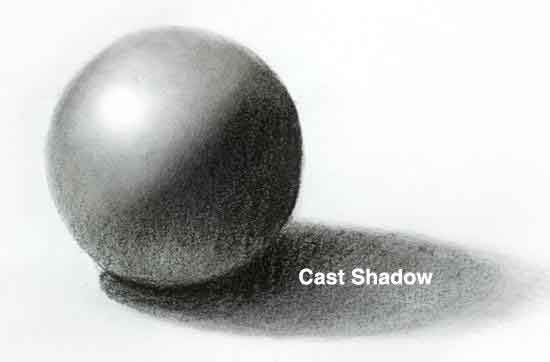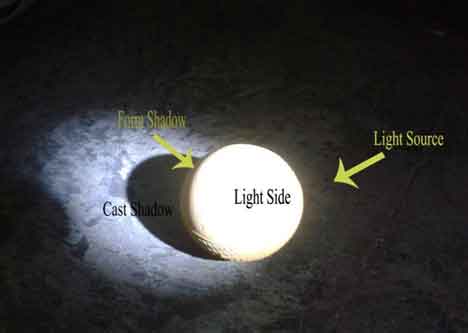
Light travels in a straight line at all times.
The light creates shadows in direct relation to whatever the light touches, the angle from which the light is coming, and the intensity of the light source.

The intensity of the light source determines the properties of the cast shadow.
- A cast shadow with a sharp edge will be created by a hard light, whereas
- a cast shadow with a hazy edge will be created by a soft light.
The 3 areas of a form:
When you’re initially getting started, all you have to focus about are the three basic parts of the form:
- Light side– This covers the Halftones and Highlights.
The highlight is the brightest region of the object where the light falls directly on it.
Halftones will always be lighter than any value on the shadow side and will blend in with it (sometimes they can be split into light half tones and dark half tones).
- Shadow side– The Form Shadow, the Form Shadow Core, and Reflected Light are all part of this.
The Form Shadow Core is the deepest section of the shadow; the rest is made up of dark tones that blend out from the core shadow into any reflected light.
The light reflected onto the top from the surface it sits on or ambient light around the object is referred to as reflected light.
- Cast shadow– There are three sections to this.
The darkest section of the cast shadow that rests right beneath the object, the mid tone that makes up the majority of the cast shadow form, and the cast shadow’s lightest, softest tail

A Form Shadow is always soft (although with fuzzy edges on occasion), whereas a Cast Shadow is always hard (albeit with blurry edges on occasion).
The dark side of an object that is not facing the light shows the shape’s form and mass.
The Form Shadow Core is the deepest, darkest part of the Form Shadow.


